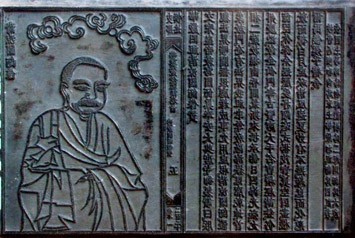(VOVworld) - The collection of woodblocks found in Vinh Nghiem Pagoda, Bac Giang Province has been officially recognized as a World Documentary Heritage by UNESCO at its recent conference in Bangkok. This is the third time Vietnam has been honored in this way after the Nguyen dynasty woodblocks and steles at the Temple of Literature. The collection of valuable woodblocks, which are said to have been made in the 13th, 14th, 15th, and 17th centuries, provides a wealth of information on the foundation, development and ideology of Truc Lam Zen Buddhism, founded by King Tran Nhan Tong in the 11th century. Lan Anh reports…
Ancient documents reveal that the Vinh Nghiem pagoda was built in the 11th century under the Ly dynasty. It was later turned into a training center for talented monks by three head Vietnamese monks: Tran Nhan Tong, Phap Hoa, and Huyen Quang during the Tran dynasty in the 13th century. The remaining ruins date back to the Le and Nguyen dynasties in the 15th and 19th centuries. The Most Venerable Thích Thanh Vịnh, Deputy Head of the Vinh Nghiem pagoda, says the pagoda houses a large collection of relics including over 100 devotional statues, ancient epitaphs, and the biggest medieval sutras carved on wood in Vietnam. Most Venerable Thich Thanh Vinh said: "In Vinh Nghiem pagoda, sutras were carved on wood as early as the 15th century as this was a centre for training Buddhists during the Tran dynasty. The pagoda has a collection of 3000 woodblocks along with numerous sutras, essays, and diaries, whose values lie in their contents and the sophisticated carving techniques the artisans from the Tran, Post Le, and Nguyen dynasties used."
 |
| The blocks were made of “thị” wood taken from the pagoda’s garden, which is soft, smooth, durable, easy to carve on and rarely distorts or cracks |
The uniqueness of the woodblocks lies in that fact that they are the only set of sutra woodblocks to have survived in the country. Researchers say the foundation of Truc Lam Zen in the 13th century is not only of great significance to Vietnam but also to the region and the world. The basic idea behind this school of thought is “tự lực” or “self-reliance” and believing in oneself, and “tùy duyên” or what is known in Buddhism as pratyaya, an indirect cause, living in harmony with nature, enjoying life on earth, reaching enlightenment, and helping others to do the same. Truc Lam Zen Buddhism marked the “Vietnamization” of Buddhism which originally came from India. According to Tran Van Lang, the director of Bac Giang provincial Museum, Zen ideology was quoted in the compilation entitled “Yen Tu Nhật Trình” dated back the 16th century. Lang told VOV: “Yen Tu Nhat Trinh” can’t be found anywhere else, except for Vinh Nghiem pagoda, although we have been to Bo Da and Van Ha pagodas, which are said to still keep woodblocks sutras. The master monk had studied a lot of Indian and Chinese Buddhist sutras before founding Zen Buddhism in Vietnam, with its distinct characteristics. The ideology that King Monk Tran Nhat Tong wants to convey is that people do not have to travel anywhere to practice Buddhism. Buddha exists in everyone’s heart."
The blocks were made of “thị” wood taken from the pagoda’s garden, which is soft, smooth, durable, easy to carve on and rarely distorts or cracks. The majority of the blocks feature writing on both sides and have been engraved with Chinese or Nôm (a classic vernacular script of Vietnamese language). The woodblocks are covered with deep layers of shiny black ink, as they were used to print numerous times, highlighting the craftsmen’s talent. Han Nom or Chinese based Vietnamese script researcher Nguyễn Văn Phong ,Deputy Director of Bac Giang Provincial Museum said: "There are only a few wood carving guilds in Vietnam, the most prestigious of them being from the northern province of Hai Duong. These craftsmen were very skilled as they could carve up to 5 letters in 1 square centimeter. Some of the letters can even contain up to 20 strokes. In addition to the huge responsibility, they must have been excellent at both carving and languages to be able to finish this job."
The carving process lasted for hundreds of years and was inherited through 59 generations of head monks at Vinh Nghiem pagoda, as it took a skillful craftsman at least 2 months to finish carving one block. Each wood block is a piece of sophisticated artwork, reflecting the deftness of Vietnamese craftsmen in the past. The blocks are valuable examples of wood carving in Vietnam during the Le and Nguyen dynasty and extremely important to researchers.